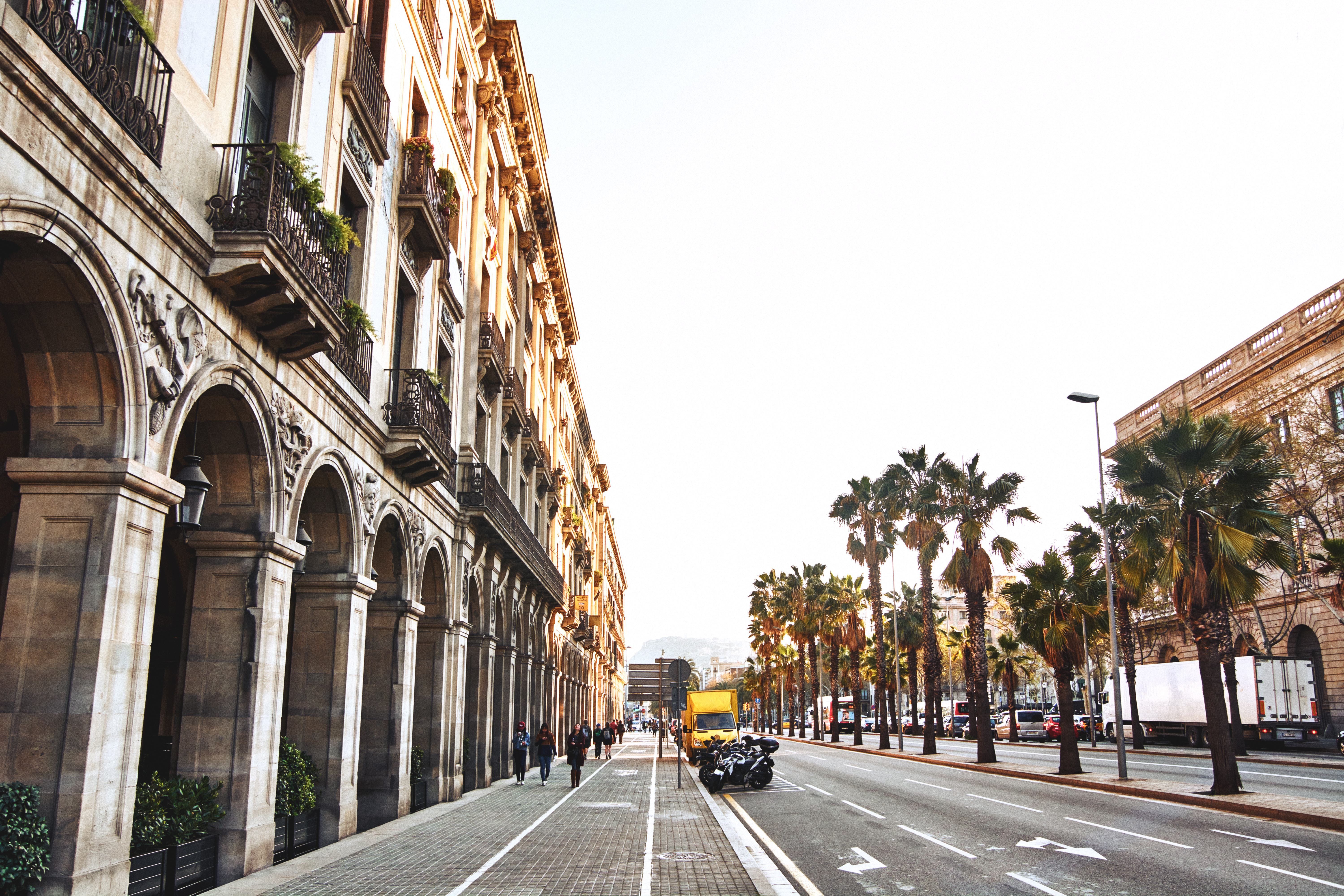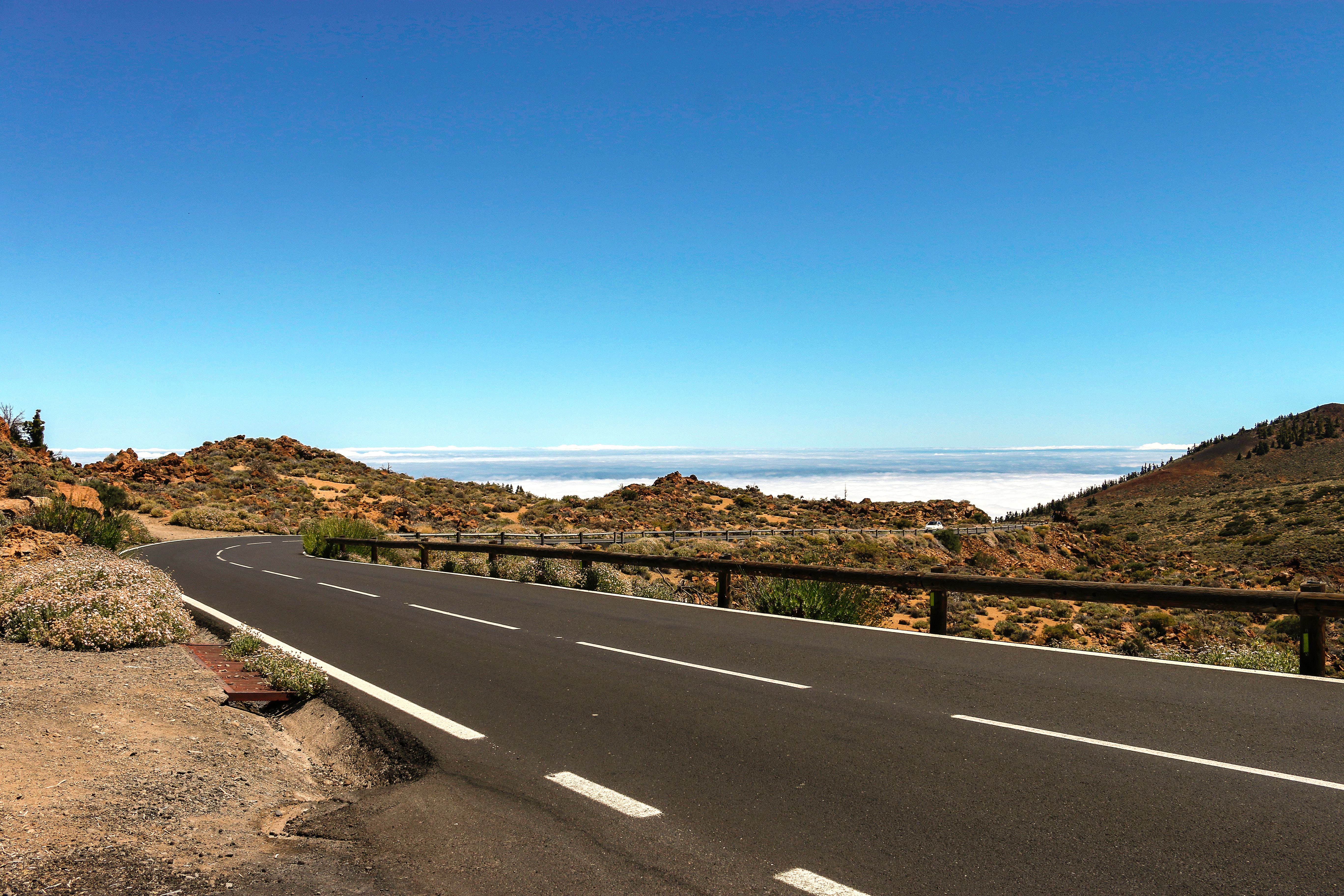Driving in Spain: Spanish Road Rules, Tips and Advice
Spain is home to stretches of sunny beaches as well as spectacular mountain ranges, making it the perfect country for a road trip. Whether you’re planning to relax on the Costa del Sol, discover the sites of Madrid or Barcelona, or explore the Basque Country, our guide to driving in Spain will ensure you are equipped and confident behind the wheel, adhering to Spanish road rules. So if you’re wondering, ‘what do I need to drive in Spain?’, keep reading for all the information you need on driving regulations in Spain. Additionally, you might find our driving in Europe checklist helpful!
Driving in Spain Requirements - What do I need to Drive in Spain?
You can legally drive in Spain with a UK driving license, provided you are over the age of 18. Driving regulations in Spain also require you to keep the following items within easy reach. If you fail to carry these items in your car, you may be fined:
-
Proof of insurance
-
Passport as proof of ID (and for travel purposes)
-
V5C certificate
-
Warning triangle
-
UK sticker or Euro plates
-
Headlamp beam deflectors
-
Spare wheel or tyre repair kit
-
Hi-Viz jacket if you are required to walk on the hard shoulder
-
Spare pair of glasses if you wear them
Spanish Road Rules
Driving regulations in Spain can differ to rules in Britain, so familiarise yourself with the particulars.
Drink Driving
There are strict alcohol limits for drivers. According to Spanish road rules, blood alcohol limit for drivers is 0.05%, but this drops to 0.03% for drivers who have been driving for under two years, are driving a vehicle with more than eight passenger seats, or are driving vehicles over 3.5 tonnes.

Fuel
If you run out of fuel on certain main roads, you can be fined. However, it’s illegal to carry spare fuel in the car in Spain, so keep an eye on your fuel levels.
Giving Way and Roundabouts
In Spain, cars already on the roundabout have priority over cars that don’t. If you’re approaching an intersection, you should give way to vehicles coming from the right. Additionally, trams and emergency vehicles have priority.
Speed Limits and Penalties
Like its neighbouring European countries, driving regulations in Spain refer to the metric system and speed is measured in kilometres per hour, rather than miles. If you’ve driven your own car from the UK, it’s essential to be extra vigilant that you measure your speed in km. Speed limits will be clearly marked on signs, but there are general speeds for different areas and roads.
Built-up areas, such as towns and suburbs, generally have a speed limit of 50km/h. This equates to 31mph. It’s worth knowing that some Spanish towns are ancient and can have narrow streets and one-way roads. Single carriageways have a speed limit of 90km/h (55mph) while dual carriageways are slightly faster as 100km/h (62mph). Spanish road rules require you to drive at least 60kmh (37mph) on motorways/autopistas but no faster than 120km/h (74mph).
If you break the speed limit in Spain, the penalties are sorted into a graded system, so your fine is determined by the extent to which you have exceeded the speed limit. You could be fined €600 (£525) for a serious offence, with varying other fines ranging from €100 to €500. Currently, it’s not possible to gain any points on your licence for speeding with a UK licence in Spain.
In Spain, it’s illegal to use a speed camera radar as these can scramble signals. You could be fined up to €6000 if you’re caught using one. This doesn’t apply to Satnavs or GPS systems with speed camera alerts, and the Spanish Transport Department has even created an app that tells you where speed cameras are located.
Traffic Lights
Spanish traffic lights are much the same as British traffic lights. It’s useful to know that solid amber means you must stop at the stop line while flashing amber lights on the side of the road mean you’re approaching traffic lights or an area with a 50km/h speed limit.
Overtaking
Cars attempting to overtake you will often flash their lights to give you a warning. The speed limit can be exceeded by 20km/h if you are overtaking on smaller roads with one lane in each direction. If you’re driving a vehicle or an outfit exceeding 10m in length or 3.5 tonnes in weight, you must stay at least 50m behind the vehicle in front of you. This doesn’t apply in built-up areas where overtaking is not permitted.

Towing
If you are considering taking your bikes with you or towing a caravan, there are a number of rules to be aware of. Overhanging loads, such as bike racks, must be indicated by an aluminium or plastic reflectorised red and white panel measuring 50cmx50cm. If your outfit (including a caravan) exceeds 12 metres, you will need to fit one large or two small marker boards to the back of your vehicle, between 50-150cm off the ground. The boards must have plain yellow centres with a red outline and be made from aluminium.
If you’re towing, you must adhere to a speed limit of 70km/h on single carriageways and 80km/h on motorways.
Seat Belts
Family holidays are fantastic, and it’s extra important to make sure you are following the rules when it comes to seat belts and safe travel. All passengers must wear seat belts when the car is in motion. If you are travelling with children under 12 who are under 135cm tall, they must travel in a child restraint seat or system tailored to their height and weight. Children exceeding this height may wear an adult seat belt instead.
Motorways and Tolls
Spanish motorways are known as autopistas and are faster and smoother than the scenic routes! Not all Spanish motorways are tolled, there is a handy map here showing which are. Roughly 20% of autopistas charge tolls from €7 to €30. If you are travelling on tolled autopistas, it’s worth investing in a Spanish toll tag to keep momentum and avoid the hassle of handling change in a foreign currency every time you reach a toll booth. Remember to signal when joining or leaving the autopistas or whenever you change lanes to avoid being fined.

Parking
Be careful when planning to park on the street in Spain. It is banned in many areas, especially in towns and city centres. If you’re not sure, look for a sign saying ‘estacionamiento prohibido’ or a large crossed-out ‘E’ - this means that parking is prohibited! Other signs that parking is banned are yellow, red or white markings on the kerb or road. However, there are ticket machines in most Spanish towns and cities which allow you to pay for parking for up to two hours between 8 am and 8 pm. There is usually no parking limit outside of this window but check the local rules. Alternatively, some towns have ‘ORA’ or ‘OTA ZONA’ systems that allow you to buy parking permits in local shops. Or, look out for car parks where you can pay to park for extended periods. If there are spaces available, the sign outside the car park may say ‘libre’ at the entrance, while ‘completo’ means it’s full.
If you do decide to park on the street, you must leave your sidelights illuminated at night if the street is not well lit. You can only park on the right-hand side of the carriageway unless you’re parking on a one-way street, where you can park on both sides.
Road Signs and Markings
Most road signs are self-explanatory, but there are some worth being extra aware of:
A blue rectangle with the symbol of a camera - a vista point
A blue square with a white number - the maximum advised speed
A blue square with a curved white arrow and distance in metres - where a U-turn is allowed
Some road markings to be aware of:
-
Yellow zigzag - parking prohibition
-
Yellow line along the kerb - parking prohibited or restricted
-
Blue lines - limited parking
For a more in-depth guide to Spanish road signs, we recommend Rhino Car Hire's guide to road signs.
Now you’re up to speed with driving regulations in Spain you can put your knowledge of Spanish road rules to good use and begin preparing for your trip to Spain! You can find more information on driving in Europe in our European driving checklist.